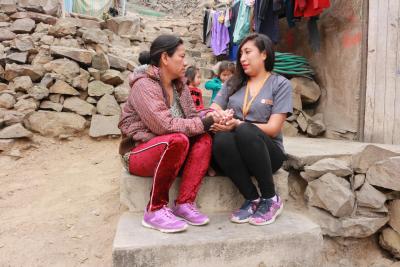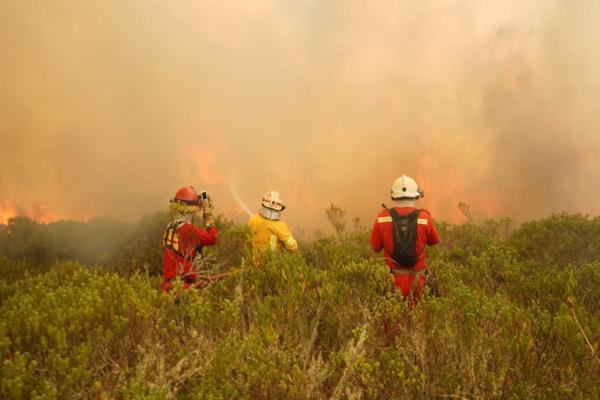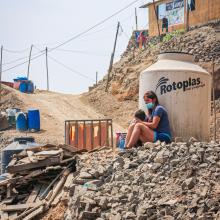In recent weeks, Peru’s National Civil Defense Institute (INDECI) has registered more than 230 emergencies in 22 regions of the country, caused by forest fires. To date, these fires have caused the death of 16 people and more than 300 animals, and has left 155 injured and more than 1,800 people affected.
The catastrophe has also razed almost 1,500 hectares of crops, as well as 16 natural areas protected by the State and 5 tourist sites. Cusco, Cajamarca, Amazonas, La Libertad, Huancavelica, Huánuco and Áncash are just some of the most affected departments. So far in 2024, INDECI has reported 233 forest fires and the situation remains critical.
But these disasters not only destroy ecosystems, properties and livelihoods. They can also generate a deep emotional and psychological burden on the people affected, especially those who live in communities near the fires and are forced to abandon or lose natural resources and face uncertainties about their future.
“It happened with the COVID-19 pandemic, also with the huaicos in previous years. In situations like this, stress and anxiety increase, especially because of the level of confusion and lack of knowledge. There is a rush to solve the problem, but without having the necessary resources, anxiety indicators increase,” says Carmen Contreras, head of the Mental Health Program of Socios En Salud.
Contreras explains that “people’s proximity to death, directly or indirectly, intensifies these mental health problems.” “In the long run, emotional, family, economic crises are generated. A snowball capable of producing post-traumatic problems,” adds psychologist Margot Aguilar, of the SAME team.

El Gobierno peruano declaró en estado de emergencia las regiones de Amazonas, San Martín y Ucayali debido a los incendios forestales.
Foto de INDECI
PAP, a crisis response
In the midst of a crisis, such as natural disasters, pandemic diseases and others, Partners In Health highlights the importance of implementing Psychological First Aid (PAP) to care for the emotional well-being of those affected. Its aim is for the person to recover from their state of disorder and regain functionality to be able to cope with the event on an emotional, behavioral and rational level.
“This is a first brief psychological intervention,” Aguilar says. “In the first stage, the immediate needs are verified, such as the person’s state of health, if he or she has the basics in safety and food. Then the basic fears they face are evaluated and support is provided so that they can be calmer within their possibilities,” she adds.
In short, PAPs are a non-intrusive support and care practice, which prioritizes listening to people without pressure and provides comfort and help so that they feel calm. Its principles of action are as follows:
Looking at: how the affected person’s current situation is assessed, who needs support within the family group, what dangers people may experience, the affected person’s current needs, and expected emotional reactions.
Listening: how to start the conversation and introductions, paying attention and active listening, accepting feelings, calming someone who is stressed, asking about current needs and concerns, helping to find solutions to needs and problems.
- Connecting: understanding when to refer to specialized psychological help or to provide information about places of support.
The head of the SAME program stresses that this first aid can be provided by a psychologist, and trained personnel, such as community agents, as it is not professional counseling and does not contain a detailed discussion of stress-causing events.

El Primer Auxilio Psicológico (PAP) puede ser realizado por un profesional de la salud mental, así como por personal capacitado (agentes comunitarios).
Foto de Socios En Salud
The “One Health” approach
The “One Health” approach (known in Spanish as “Una Sola Salud”), driven by the World Health Organization (WHO), is critical in a context such as the spread of wildfires, as it provides an understanding of how environmental degradation and natural disasters affect both physical and mental health.
“There are many health problems that stem from environmental problems. There is a lot of information around climate change that we are not linking to mental health, for example. We must connect the knowledge of the community, together with scientists, to strengthen prevention in relation to environmental care,” says Carmen Contreras.
Thus, “One Health” is crucial because it recognizes the interconnection between human, animal and environmental health. Partners in Health, therefore, is committed to incorporating this approach in its interventions to ensure that its solutions are more complete, involving the health, environment and agriculture sectors as well as local communities.



